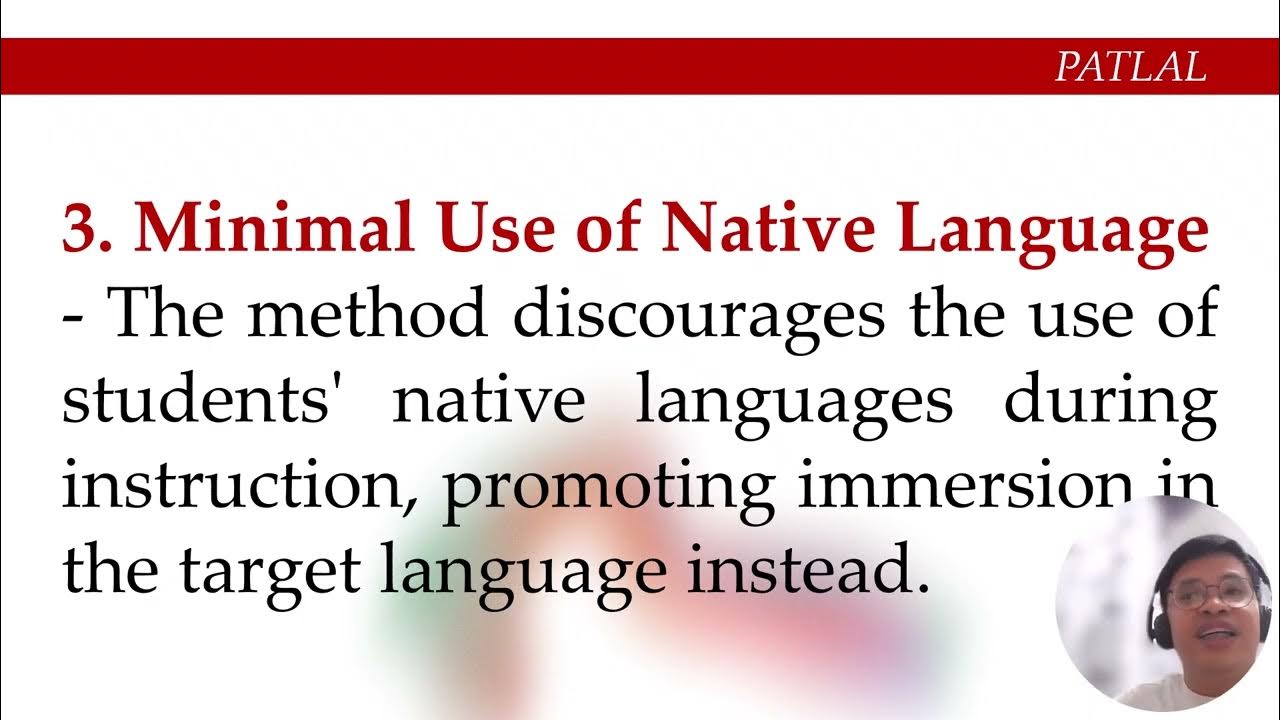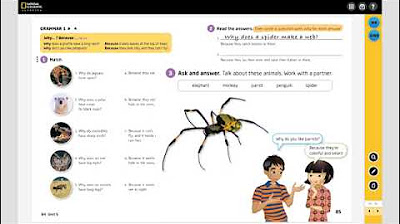Teaching Grammar - getting creative with controlled practice
Summary
TLDRIn this webinar, Joe Bakongo explores creative approaches to teaching grammar, focusing on controlled practice activities that encourage meaningful, communicative language use. Drawing on the concept of 'creative automaticity' from Scott Thornbury, he highlights activities such as rearranging students for class photos, 'find someone who' tasks, poetry writing, and using visual aids like celebrity photos and postcards to practice grammar structures. The aim is to move beyond traditional drills, fostering genuine communication while repetitively using key language forms in creative, engaging contexts.
Takeaways
- 😀 Creative automaticity involves learners practicing grammar in a meaningful, communicative way rather than just through repetitive drills.
- 😀 Traditional controlled practice methods like substitution drills and gap fills may help with basic language production but often fail to encourage real language use.
- 😀 Activities for creative automaticity should involve tasks where learners use the language repetitively but authentically, and the tasks should be communicative and relevant.
- 😀 An example of creative automaticity is using class photos, where students give and follow instructions about the arrangement of classmates, practicing prepositions in context.
- 😀 Another creative activity involves asking students 'find someone who' questions, encouraging them to ask real questions and listen for authentic answers.
- 😀 A poem like 'When I’m old I shall wear purple' can be used to practice modals and predict future actions, allowing students to creatively write their own predictions.
- 😀 Personalization is key—students can create their own examples using structures they have learned, such as writing their own predictions or talking about their experiences.
- 😀 Tasks such as guessing significant dates in a teacher’s life using grammatically correct questions in the past tense can enhance student engagement and language practice.
- 😀 Visual aids like photographs of famous people can prompt discussions about their future careers, fostering creative language use with modals of possibility.
- 😀 The use of postcards and narrative pictures allows students to practice storytelling with controlled grammar in a fun and contextually engaging way.
Q & A
What is creative automaticity, and why is it important in grammar teaching?
-Creative automaticity, as introduced by Scott Thornbury, refers to practicing a grammar structure in a creative, communicative, and meaningful way. It moves away from traditional drilling exercises, encouraging learners to use the target structure in a way that feels authentic and task-related, ultimately leading to better retention and practical application of language.
How does the webinar suggest using substitution drills in grammar teaching?
-Substitution drills can have value at lower levels, particularly for pronunciation, confidence-building, and helping learners produce language. However, they don't encourage real-world use of language, so they are less effective for developing deeper understanding or communicative competence.
What problem with gap-fill exercises does Joe Bakongo highlight?
-Gap-fill exercises, especially those in course books, often focus on form without considering meaning. For example, learners may be able to manipulate grammatical structures (like the present perfect) without fully understanding their actual meaning or use in context.
What makes an activity communicative and psychologically authentic, according to the webinar?
-A communicative activity is one that requires learners to interact and exchange meaningful information, rather than just repeating structures. Psychological authenticity means that learners are genuinely engaged, reacting to the language in ways that feel relevant to them, making the task more meaningful and motivating.
Can you give an example of a creative, communicative grammar practice activity from the webinar?
-One example is the 'Class Photo' activity, where learners use prepositions of place to organize themselves into a class photo. This task requires learners to listen and respond to instructions, using the target language meaningfully in a task-based scenario.
How does the 'Find Someone Who' activity support grammar practice?
-The 'Find Someone Who' activity encourages learners to ask and answer questions using the present perfect tense. By engaging in real communication with their peers, learners practice the structure in an authentic context, which helps solidify both form and meaning.
What role does creativity play in the poem activity described in the webinar?
-In the poem activity, learners are encouraged to write their own creative poems predicting what they will do when they are old. This personalizes the grammar practice, particularly the use of modals and future forms, and makes it more engaging and relevant to the learners.
What was the significance of using famous people's childhood photos in the grammar practice activity?
-Using childhood photos of famous people allows learners to predict future careers or identities using modal verbs like 'will' and 'might.' The task engages learners in making guesses based on visual cues, while also helping them practice grammar in a creative and contextually meaningful way.
How does the 'Simple Past Tense Guessing Game' work in the classroom?
-In the 'Simple Past Tense Guessing Game,' learners are presented with dates from the teacher's life (e.g., the year the teacher’s parents met), and they must ask grammatically correct questions to guess the significance of these dates. The task encourages learners to form accurate past tense questions while also creating a personal connection to the content.
Why does the webinar suggest using pictures in grammar practice activities?
-Pictures help create a visual context that makes grammar practice more engaging and memorable. They provide an easy way to illustrate concepts like the past continuous or present perfect, allowing learners to make predictions, describe actions, and discuss possibilities, which makes the grammar more accessible and dynamic.
Outlines

This section is available to paid users only. Please upgrade to access this part.
Upgrade NowMindmap

This section is available to paid users only. Please upgrade to access this part.
Upgrade NowKeywords

This section is available to paid users only. Please upgrade to access this part.
Upgrade NowHighlights

This section is available to paid users only. Please upgrade to access this part.
Upgrade NowTranscripts

This section is available to paid users only. Please upgrade to access this part.
Upgrade NowBrowse More Related Video
5.0 / 5 (0 votes)





